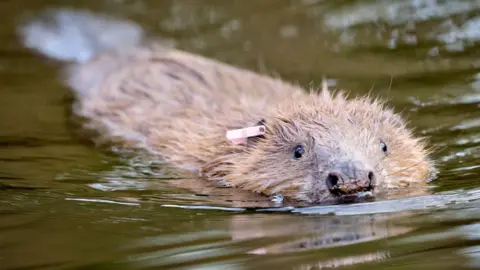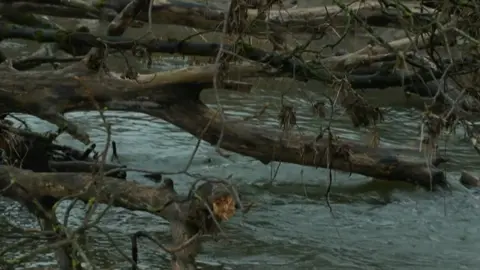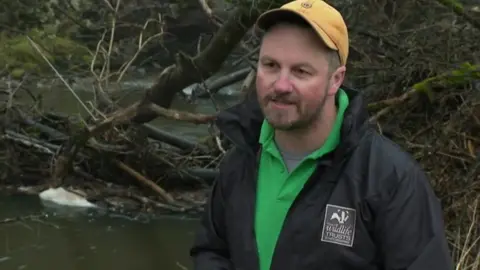Beaver reintroduction in Staffordshire 'could cut flooding risks'
 PA Media
PA MediaReintroducing beavers into Staffordshire could cut flooding risks and benefit other animals, according to a wildlife trust.
The dam-building rodents have already been released into other counties after an absence of centuries.
A trial has been carried out in Staffordshire by the county's wildlife trust to recreate the effects of beavers on river banks.
"The key benefit is it alleviates flooding," manager Nick Mott said.
Trees have been laid across a river in the Manifold Valley, near Hulme End, in the Peak District.
Mr Mott said as well as slowing the water's flow, the move should help other species, such as the white-clawed crayfish.
The UK's only native species has been under threat for decades from the invasive American signal crayfish, which competes for food and carries disease.
Mr Mott said reintroducing beavers could offer "a lifeline" to native crayfish by providing them with better habitats.

Beavers were hunted to extinction in Britain in the 16th Century for their fur, meat, and scent glands.
But, following the reintroduction of the rodents in Dorset in February, several other counties including Derbyshire and Nottinghamshire have quickly followed suit.
While beavers have often been described as eco-engineers as their dams create wetland habitat, the National Farmers' Union has warned they can cause disruption.
A government consultation to seek people's views on reintroducing them to England's rivers opened in August and closed in November.
Staffordshire Wildlife Trust said it wanted to see the return of beavers but only in the right part of the county.
"We want them to stay forever so it is really important that a lot of work is done up front, working with all the landowners to make sure that everybody is on board," head of reserves, Jeff Sim, said.


Follow BBC West Midlands on Facebook, Twitter and Instagram. Send your story ideas to: [email protected]
